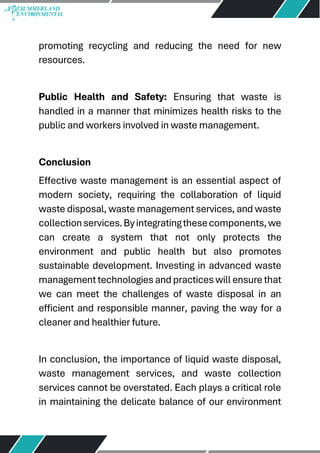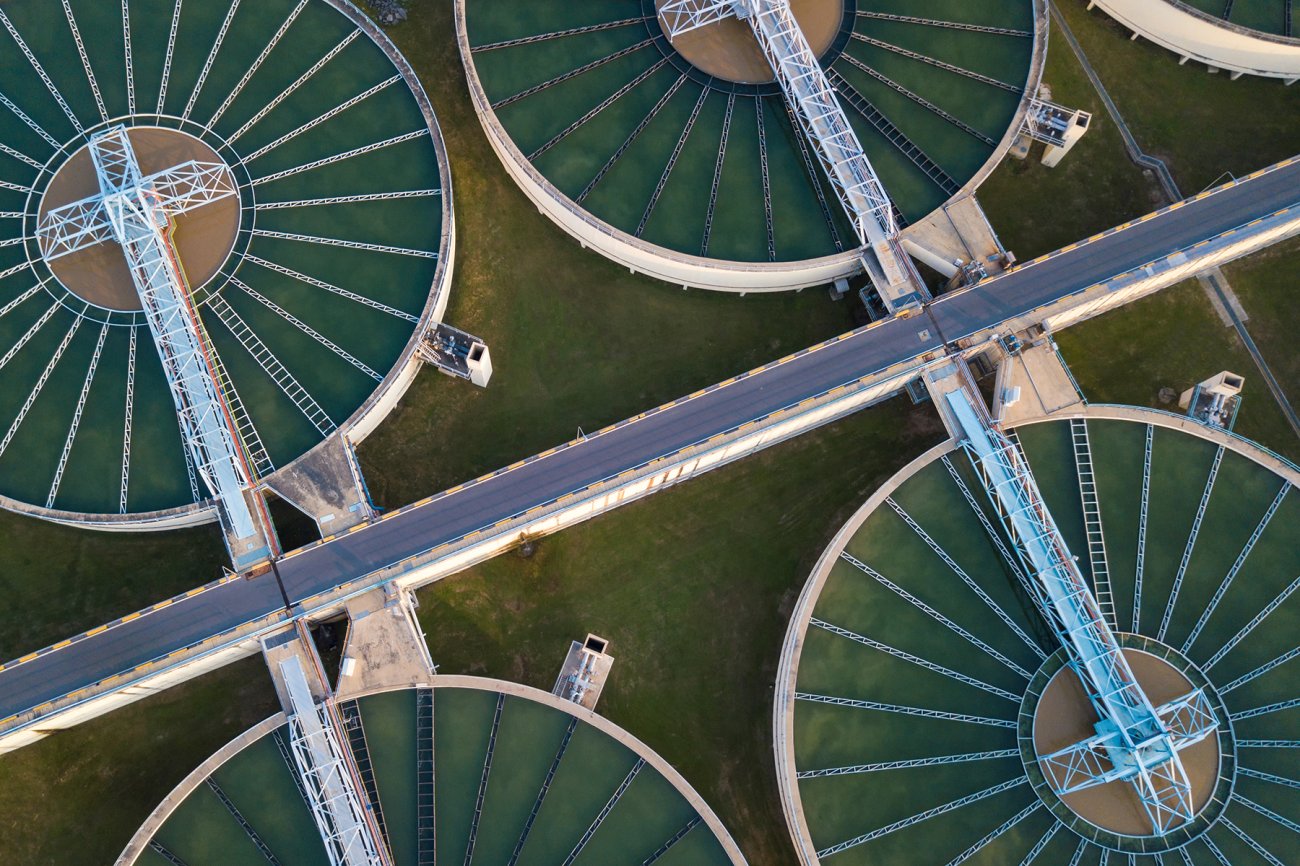What Does Reclaim Waste Mean?
Table of ContentsThe Best Strategy To Use For Reclaim WasteWhat Does Reclaim Waste Mean?Some Known Facts About Reclaim Waste.The 7-Second Trick For Reclaim WasteThe Ultimate Guide To Reclaim Waste
Explore the types, incidents, and kinds of liquid waste. Domestic sewer waste refers to the waste and items from a residential sewage-disposal tank. This kind of waste is produced by humans in homes, institutions, and other buildings. This only includes sewage-disposal tanks that have a drainpipe area. The correct administration and disposal of residential sewage waste call for liquid waste to be moved to a sewage therapy plant where the appropriate methods and equipment are related to cleanse and dispose of waste.
Business waste frequently consists of potential dangers, such as combustible materials or a blend of fluid and solid waste products, and needs an extra advanced and thorough disposal process. The disposal of business waste typically involves the filtering of waste prior to transportation to guarantee secure and correct disposal. Industrial waste is created from by-products and overflow of commercial procedures and production.
This kind of waste can not make use of the same sewage administration transport or procedures as septic or commercial liquids. The hazardous waste management process needs the examination and testing of liquid waste before it goes through the disposal procedure (liquid waste disposal melbourne). Runoff waste is the liquid waste that comes from runoff and excess stormwater in extremely inhabited areas or cities
Runoff waste can trigger contamination and flooding if not dealt with correctly. Find out more about sewer cleaning and waste management. Ensuring proper waste monitoring can prevent disasters and reduce ecological damage. Both people in property setups and experts in commercial or manufacturing markets can gain from understanding the processes and laws of fluid waste monitoring.
3 Simple Techniques For Reclaim Waste
Get in touch with PROS Providers today to discover our waste administration and disposal solutions and the appropriate methods to care for the fluid waste you produce.
(https://linktr.ee/leonaube33101)Do you know what takes place to your water when you disengage, flush the bathroom or drain the cleaning device? No? Well, it deserves understanding. This so-called 'wastewater' is not just a crucial resource yet, after therapy, will be launched to our land, waterways or the sea. Utilized water from commodes, showers, baths, cooking area sinks, laundries and industrial procedures is called wastewater.

water utilized to cool down machinery or tidy plant and tools). Stormwater, a type of wastewater, is drainage that flows from farming and metropolitan locations such as roofing systems, parks, yards, roads, courses and seamless gutters into stormwater drains pipes, after rainfall. Stormwater flows unattended visit our website directly to regional creeks or rivers, at some point reaching the ocean.
An Unbiased View of Reclaim Waste
In Queensland, the majority of wastewater is treated at sewage treatment plants. Wastewater is carried from residential or commercial websites with a system of drains and pump terminals, understood as sewage reticulation, to a sewer therapy plant. City governments construct, keep and run most sewer treatment plants. Operators are certified under the Environmental Security Act 1994 to discharge treated wastewater at an acceptable environmental standard into rivers.
The Division of Natural Resources encourages city governments concerning handling, operating and preserving sewerage systems and therapy plants. In unsewered locations, city governments might need homeowners to install specific or house sewer treatment systems to treat residential wastewater from commodes, kitchens, bathrooms and washings. The Department of Natural Resources authorises using family systems when they are shown to be effective.
In some new neighborhoods, therapy of some stormwater to remove clutter, sand and gravel has actually begun utilizing gross pollutant traps. Wastewater therapy happens in 4 stages: Gets rid of solid issue.
Wastewater after that streams into large tanks where solids resolve and are removed as sludge. Grease and scum are skimmed from the surface area. Makes use of tiny living microorganisms called micro-organisms to break down and get rid of staying liquified wastes and great particles. Micro-organisms and wastes are integrated in the sludge. Removes nitrogen and phosphorus nutrients that might create algal blooms in our rivers and threaten marine life.
How Reclaim Waste can Save You Time, Stress, and Money.
Nutrient elimination is not readily available in all sewer treatment plants because it requires pricey specialised equipment. It is becoming extra common in Queensland. Clear fluid effluent created after therapy may still have disease-causing micro-organisms. If this effluent is released into rivers such as rivers or the sea, the micro-organisms will eventually die out.

Most wastewater moves into the sewage system. Under the Act, local governments administer authorizations and licences for eco relevant tasks (ERAs) including wastewater launches that may have a regional influence.
About Reclaim Waste
Or else, examples are taken for lab evaluation. Frequently lots of examinations are required to establish the levels of each of the different contaminants such as oils, hefty steels and chemicals in water. Surveillance provides factual info regarding water top quality and can validate that permit problems are being fulfilled. The details gotten through monitoring gives the basis for making water high quality choices.